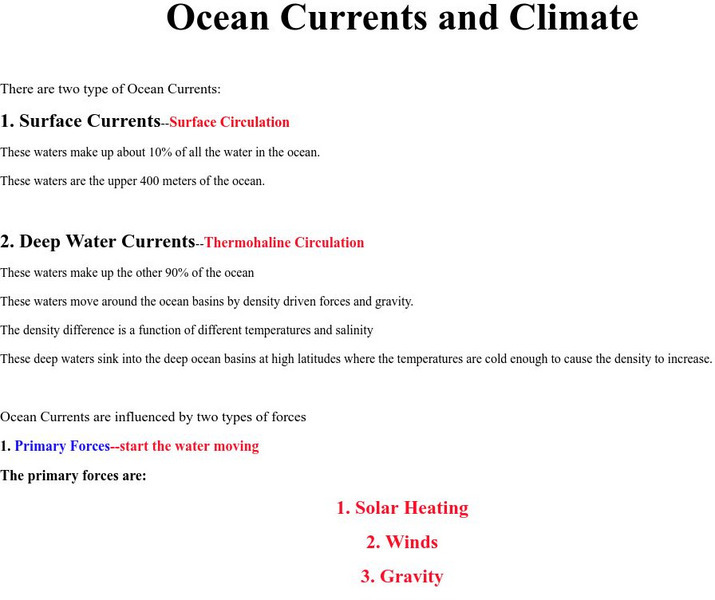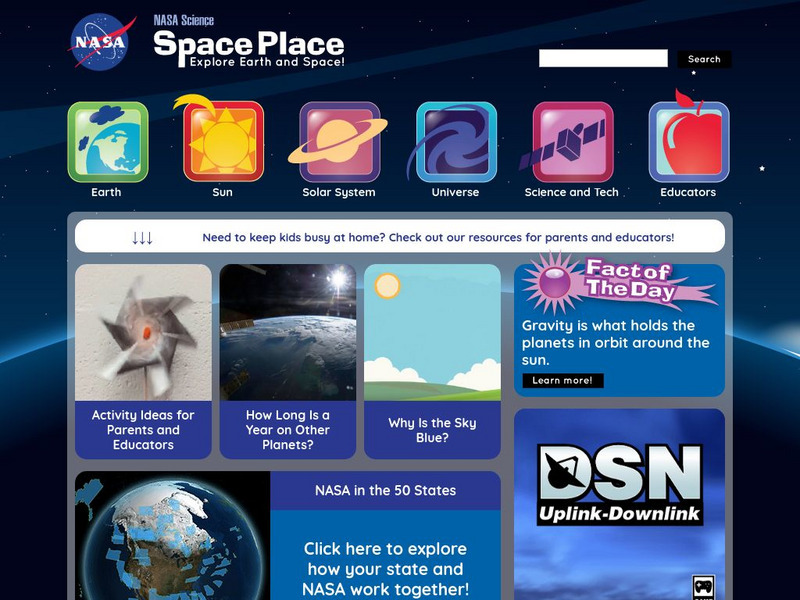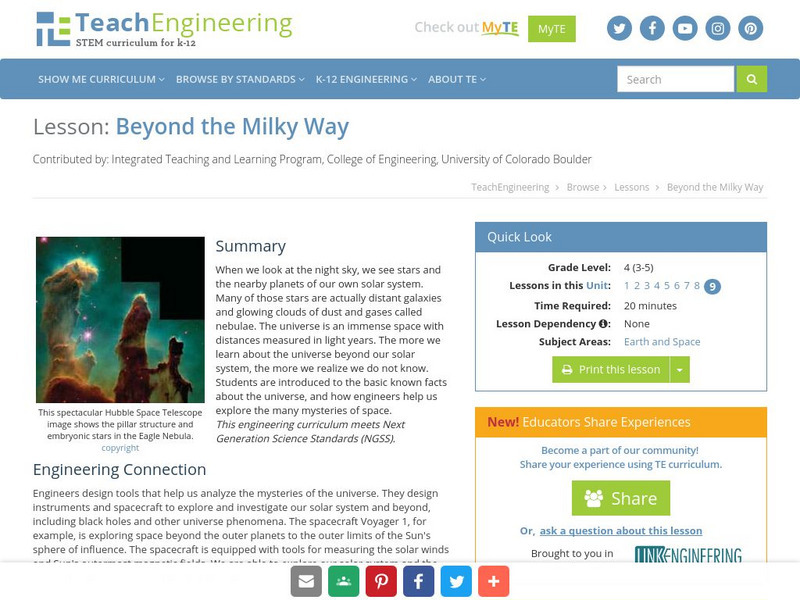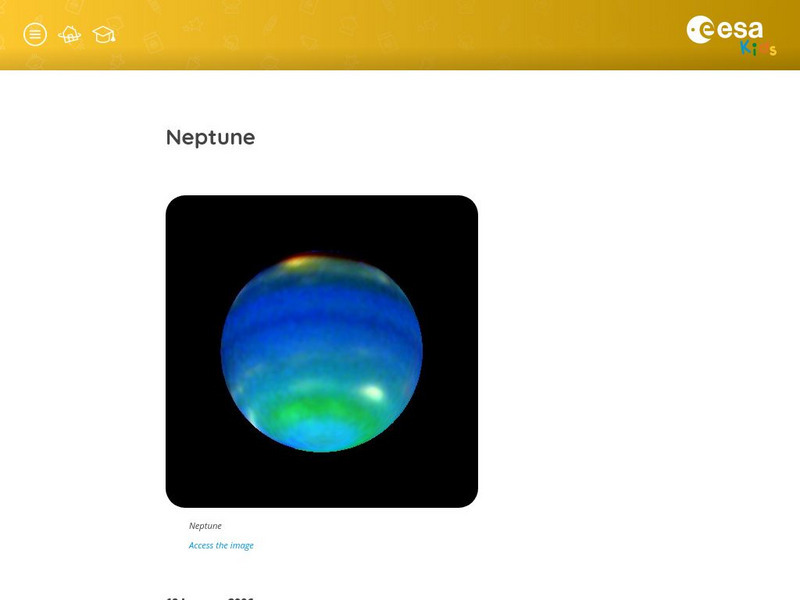Hi, what do you want to do?
University of Texas at Austin
The University of Texas Mc Donald Observatory: Pluto
Discover interesting information about Pluto, a member of the Kuiper Belt and no longer a planet since 2006.
University of Texas at Austin
The University of Texas Mc Donald Observatory: Meteorites
Discover fascinating facts about meteorites, pieces of asteroids that originate in outer space and survives their passage through the atmosphere to reach the ground.
ACT360 Media
Act Den: Sky Den
This journey will help you solve big questions about the universe. You will be able to see beyond human capabilities and will learn what scientists are discovering.
Massachusetts Institute of Technology
Mit: Open Course Ware: Courses: Extrasolar Planets: Physics and Detection
A university-level course that examines the atmospheres and interiors of extrasolar planets, or exoplanets. The course also looks at the search for planets that could support life. Includes lecture notes and assignments.
Other
Astro Mia: Tierra, Sistema Solar Y Universo
This site is a good resource to study Astronomy. It has six sessions: the Universe, the solar system, the earth and the moon, history of Astronomy, articles, famous astrologers and a glossary.
University of Maryland
University of Maryland: The Astronomy Workshop
Find tools to calculate astronomical distances and sizes, to view various Solar System models, to compare gravity's affect on weight, and more. A good place to find interesting facts, simple animations, and astronomy links to physics and...
Other
Montana State University: How Much Would You Weigh on Distant Planets?
This resource contains a lesson plan in which young scholars study the effects of gravity on the planets of the Solar System. They will view movies from the lunar Apollo missions, calculate their own weight on other planets, and propose...
Alabama Learning Exchange
Alex: Beyond the Earth Part Ii
A continuation of Beyond the Earth Part I. As part of a unit on the solar system, students will choose a component of the solar system to research. Students may use a variety of resources such as the Internet, books, and reference...
Alabama Learning Exchange
Alex: Beyond the Earth Part I
Students will access prior knowledge of the solar system by completing a graphic organizer. After participating in a teacher lecture and whole group discussion, the students will work in collaborative groups to create a...
Khan Academy
Khan Academy: Arts and Humanities: Big History Project
Course looking at history of the universe, the solar system, history of the Earth and of life on Earth. Should be cross-checked against videos. Has a few Crash Course videos in the content and the project has a presence on Youtube....
University of Southern California
University of Southern California: Ocean Currents and Climate
The climate of our planet is greatly affected by Earth's oceans. Learn here about the different oceanic currents and the role those currents play on climate.
National Science Foundation
National Science Foundation: Astronomy and Space: Research Overview
Explore some of our most fundamental questions about space exploration with this research overview collected by scientists at the National Science Foundation. Additionally, experience deep space first-hand with telescope interactives.
Other
University of Leicester: Comets, Asteroids & Meteorites
Provides a general overview of comets, asteroids, and meteorites. Content includes ways to identify them in the night sky, as well as detailed information on each type of small body.
Fundación Cientec
Cientec: Somos Polvo De Estrellas
Read about the evolution of the stars, the elements of the solar system and the evolution of the Universe.
Other
American Scientist: Author Interview: Neil De Grasse Tyson
Astrophysicist Neil deGrasse Tyson has made "Popularizing science a personal passion." Tyson's latest book, Origins, is the starting point here for a discussion of dark matter, intelligent life in our solar system, the possibility of...
NASA
Nasa: Star Child: Elementary Astronomy Unit
Learn everything you can about outer space with this interactive astronomy unit. 2 levels of difficulty with modules on the solar system, the universe, other "space stuff" and a glossary of terms. Links for parents and other great website.
Other
Celestia
This site provides a free space simulation that lets you explore the universe in three dimensions. There is a forum for teachers and lesson plans that help enhance student use of the simulation. A program must be downloaded in order to...
Other
Paper Plate Education: Serving the Universe on a Paper Plate
Excellent resource for "paper-plate" activities that help simplify various astronomy topics. Learn how to build a "Moon Finder" and "Planet Pointer," and create a paper-plate model that explains the Transit of Venus.
NASA
Nasa Star Child: Star Child
StarChild from NASA defines and describes the Solar System in a simple and easy-to-understand manner. The website is broken down into two versions for the student, grade school and junior high.
TeachEngineering
Teach Engineering: Beyond the Milky Way
When we look at the night sky, we see stars and the nearby planets of our own solar system. Many of those stars are actually distant galaxies and glowing clouds of dust and gases called nebulae. The universe is an immense space with...
European Space Agency
European Space Agency: Esa Kids: Our Universe: Neptune
A basic overview of the planet Neptune. Links to information about the other planets and objects in our solar system are included.
Harvard University
Harvard University: The Sun
Includes a brief history of the sun's development and its future. Also provides simple statistics, solar activities, and references.
European Space Agency
European Space Agency: Esa Kids: Our Universe: Earth
A basic overview of the planet Earth. Links to information about the other planets and objects in our solar system are included.
NASA
Nasa Star Child: What Is a Light Year and How Is It Used?
This is a definition and example of how distance is measured in astronomy, such as the distance between our earth and the stars.




















